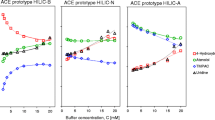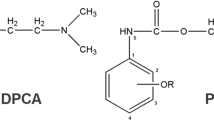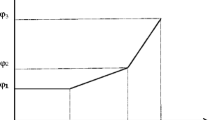Abstract
Previous studies demonstrated that quantitative structure-retention relationships (QSRR) combined with the linear solvent strength (LSS) model allow for prediction of gradient reversed-phase liquid chromatography retention time for any analyte of a known molecular structure under defined LC conditions. A QSRR model derived at the selected gradient time and at the same gradient time was tested. The aim the present study was to evaluate the accuracy of QSRR predictions used during the predictions of LC gradient retention times with variable gradient times. For this purpose, predictions of retention times at two gradient times were used to find the optimal, different gradient times. In the first step, experimental retention data for the model set of analytes were used to derive appropriate QSRR models at two gradient times. These QSRR models were further used to predict gradient retention times for another set of testing analytes at the two selected above gradient times. Then, applying linear solvent-strength (LSS) theory, the predicted retention times for test analytes were used to find other optimal gradient times for those analytes. Satisfactory predictions of gradient retention times for test analytes were obtained at gradient times different from those applied for model analytes.



Similar content being viewed by others
References
Bączek T, Kaliszan R (2002) J Chromatogr A 962:41–55. doi:10.1016/S0021-9673(02)00557-5 Medline
Bączek T, Kaliszan R (2003) J Chromatogr A 987:29–37. doi:10.1016/S0021-9673(02)01701-6 Medline
Kaliszan R, Bączek T, Buciński A, Buszewski B, Sztupecka M (2003) J Sep Sci 26:271–282. doi:10.1002/jssc.200390033
Snyder LR, Dolan JW, Carr JW (2004) J Chromatogr A 1060:77–116
Bączek T, Kaliszan R, Novotná K, Jandera P (2005) J Chromatogr A 1075:109–115. doi:10.1016/j.chroma.2005.03.117 Medline
Fornal E, Borman P, Luscombe C (2006) Anal Chim Acta 570:267–276. doi:10.1016/j.aca.2006.04.027 Medline
Dolan JW, Snyder LR, Haber P, Bączek T, Kaliszan R, Sander LC, Wolcott R (1999) J. Chromatogr. A 857:41–68. doi:10.1016/S0021-9673(99)00766-9 Medline
Kaliszan R (1997) Structure and retention in chromatography. A Chemometric Approach. Harwood Academic Publishers, Amsterdam
Snyder LR, Dolan JW (1998) Adv Chromatogr 38:115–187
Bączek T, Kaliszan R, Claessens HA, van Straten MA (2001) LC/GC Europe 14:304–313
Acknowledgments
The work was supported by the Polish State Committee for Scientific Research Projects no. 2 P05F 041 30 and no. N N405 1040 33.
Author information
Authors and Affiliations
Corresponding author
Rights and permissions
About this article
Cite this article
Bączek, T., Bodzioch, K., Michalska, E. et al. Predictions of Reversed-Phase Gradient Elution LC Separations Supported by QSRR. Chroma 68, 161–166 (2008). https://doi.org/10.1365/s10337-008-0674-7
Received:
Revised:
Accepted:
Published:
Issue Date:
DOI: https://doi.org/10.1365/s10337-008-0674-7




